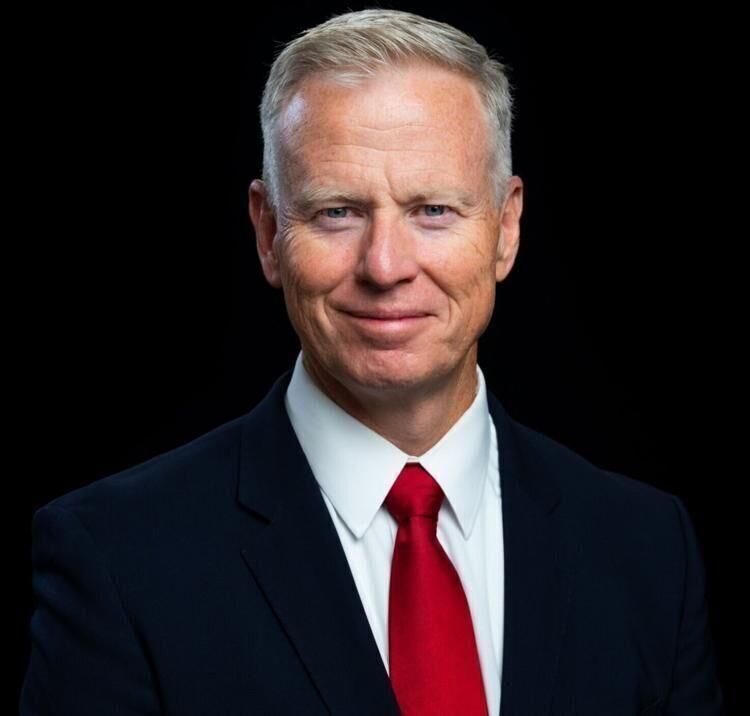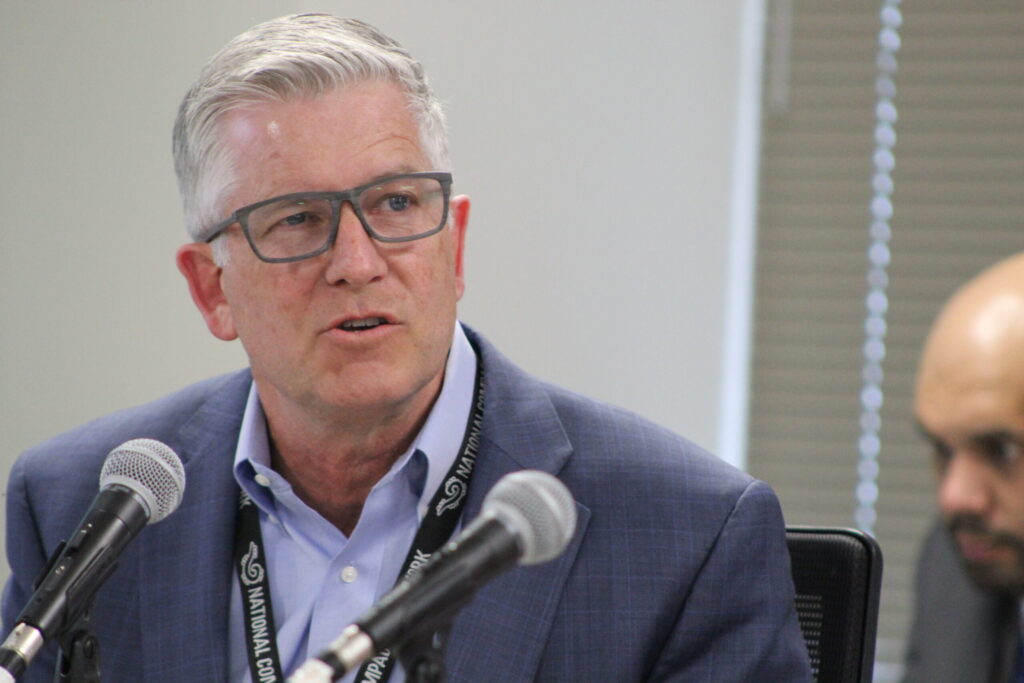Why would anyone want to scuttle FEMA? | HUDSON
Like most of us, I don’t remember much from the years before my twin brother Richard and I started school, yet I still learned a lot from my father about camping in the deserts and mountains of southern New Mexico. As a teenager, my father spent several summers tending cattle on Forest Service meadows near Cloudcroft. Working alone, following cows and sheep in the western United States has become a job for immigrant young men today. Few 21st century teens would volunteer to spend weeks-on-end without their cellphones. Few would have the slightest idea how to shoe a horse, build a fire at night, cook their meals over an open flame or build a shelter against the rain. We got the hang of these tasks, except for the horse shoeing, and my son is a fairly capable outdoorsman who carries on our family knowledge.
My Dad was completing his engineering degree on the G.I. Bill at New Mexico A&M in Las Cruces following World War II. Living in converted military barracks and poor as church mice, as a family camping was an escape we could afford. One trip remains vivid in my memory. We pitched our tent in the sandy bottom of a wash on the flanks of the Organ Mountains. A layer of sand deposited there provided a comfortable surface long before self-inflating sleeping pads. Richard and I gathered firewood from debris deposited against the walls of the arroyo. As we climbed into our sleeping bags, we could hear distant thunder and see occasional lightning flashes. Some hours later, our Dad was shaking us awake. It was now raining hard.
Stay up to speed: Sign up for daily opinion in your inbox Monday-Friday
He set us to gathering up pots and pans and scattered camping gear while he pulled up our tent stakes rolling everything inside the tent — sleeping bags, boots, clothing and bags — into a huge wad he stuffed into the trunk of our car. I think kids tend not to get scared until they realize the adults around them are scared. He barked, “We have to get out of this wash. A flash flood will blow through here any minute!” Shivering in wet pajamas, we jumped into the back seat before he eased our car up onto the bank of the still dry campsite. We parked, and sure enough, a six-foot-high wall of water careened down the channel minutes later. If I wasn’t scared before, I was then. I don’t want to say he saved our lives so much as he knew what the risks were, and he went into action protecting our lives in the process. Call it “local knowledge.” That sort of experience sticks with you.
When I arrived in Colorado to work at Mountain Bell in 1972, there were still many stories circulating about the 1965 Denver flood that roared down Cherry Creek and the South Platte, flooding riverside businesses and wiping out bridges. The Cherry Creek and Chatfield dams were constructed to prevent a recurrence. However, on July 31 of 1976 a thunderstorm stalled over Estes Park in the afternoon dumping more than a foot of water, 7.5 inches of that in a single hour, triggering a flash flood down the Big Thompson Canyon which would become a 30-foot-high wall of water which scoured the tiny communities along U.S. 34. Their year-round population was usually about 600, but another 3,500 visitors were camping in the canyon waiting for a centennial celebration of Colorado Day on Aug. 1. The death toll was 144 people while 150 businesses and more than 400 homes were destroyed.
That summer my own kids were in Maryland with their mother and grandparents, so I was available to help restore minimal telephone service in the canyon for the remaining residents. Stranded visitors were helicoptered out. The destruction I witnessed was nearly impossible to comprehend. Miles of highway had simply vanished — the asphalt peeled up and spouted out the mouth of the canyon miles away. A large community building in Glen Haven was sliced in half — rumor claimed those who ran out the front door perished, while those who used the back door survived. We installed a half-dozen kiosks with six payphones each linked to microwave repeaters atop the canyon walls. It wasn’t a perfect solution, but it would be months before cables were replaced. Surprisingly, the highway reopened 90 days later. CDOT delivered a similar miracle following the Boulder County floods in 2013.
In 1978, President Jimmy Carter created the Federal Emergency Management Agency (FEMA) as part of his reorganization of the federal government. Its purpose was to marshal federal resources when local governments were overwhelmed by a natural catastrophe. Colorado’s experience on the Big Thompson contributed to his determination a federal capacity was required. Last summer we visited my son’s family in Asheville, North Carolina, just a month before Hurricane Helene struck the region with two feet of rain on the heels of three days which delivered 11 inches of rain that loosened mountainside soils. Flash floods, landslides and toppled trees killed more than 200 in Asheville and double that across the southeast.
I returned last week curious to see how its recovery was advancing. Emma Churchman, a Quaker minister and trauma chaplain, who lives in the village of Gerton (population 301), has written a book taken from her diary kept during the initial 40 “days and nights of survival and transformation” following Helene. “The Deep End of Hope” should serve as a primer for anyone likely to be confronted with the increasing likelihood for weather disasters — particularly first responders. Perhaps it’s her theological training, but she describes survivors’ psychological responses to an “apocalypse.” They find it difficult to focus and while learn they must write down reminders of the tasks they need to tackle, and they must find their love for neighbors independent of their politics or demeanors.
She explains in her foreword, “…there are many people who still need financial and logistical help rebuilding homes… to date, counties and FEMA are struggling to provide assistance.” Nine months have elapsed, but evidence of hurricane damage peeks out in alleys, on empty lots loaded with debris and heavy equipment still yanking vehicles out of streambeds. In town, life is returning to normal despite six weeks without water or power. Students missed weeks of school but volunteered at community kitchens and food banks.
There is a funny tale of a Blackhawk helicopter that landed early on in a Home Depot parking lot, unloading several hundred generators before any formal relief administration was organized. The soldiers, guardsmen, whoever they were, left a note, “If you need one, take one.” To which someone added, “If you don’t, don’t!” A hierarchy of assistance developed according to my son. “First you hear from your family and neighbors, then your employers and your church, then come the “disaster groupies” who wish to volunteer and mostly just get in the way, then the county arrives, followed by the state and lastly FEMA shows up. With nearly half-a-century of experience across the country, FEMA delivers help no one else can. The virtually automatic $750 available to any resident was bungled, as applications were required to be submitted online, when no one had power or operating cell service — a learning experience (one hopes).
Asking survivors how they felt about FEMA, answers were often skewed by politics. Blue voters responded with variants of “Wonderfully!” while red residents grumbled “the Feds’ arrived ‘late’ and ‘didn’t help much.'” In any case, the White House and Homeland Security is continuing to talk like they plan to close down the agency returning disaster responsibilities to the states (except, of course, in blood-red Texas along the Guadalupe River). I’ve tried to understand why anyone would want to scuttle FEMA? I suppose, if you are attempting to convince Americans climate change is merely another liberal hoax, you can’t rationally justify an agency designated to respond to weather calamities. Warmer air holds more water vapor, wringing out more rain, while storms intensify more quickly. Alas, devastating emergencies will keep revisiting us whether or not we believe they’re real.
Miller Hudson is a public affairs consultant and a former Colorado legislator.











